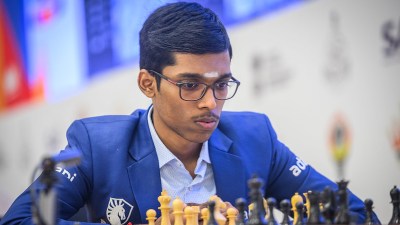Building Hope
A slum redesign project in Pune heads to a NY exhibition
A slum redesign project in Pune heads to a NY exhibition
Till a year ago,Sabina Sheikhs home in the Sheila Salve Nagar slums in Yerwada,Pune,was a dingy tin-roofed structure. Today,the 55- year- old domestic proudly shows us around the new house that has come up on the old plot. It has two bigger rooms,a toilet and a kitchen with a terraced roof. A narrow flight of stairs takes one from the living room to the bedroom,and the street can be seen from a small window.
Sheikh’s was one of the first houses to be rehabilitated under a Jawaharlal Nehru National Urban Renewal Mission (JNNURM) scheme in 2010. The redesign was not a top-down imposition of sarkari ideas but took into account the needs of the family. I did not want the kitchen or the bathroom on the first floor because I can’t climb. We got that, says Sheikh. Earlier,she shared a one-room house with her daughter,son-in-law and their two children. We did everything there: cooked,ate,slept and even fought. We have our own space now.
The various design solutions that have been put to practice in Yerwada are now being showcased at the National Design Museum,New York,as part of an ongoing exhibition titled,Design with the Other 90%: Cities. The exhibition,curated by the Smithsonian Cooper- Hewitt,National Design Museum,is an attempt to present collaborative ideas for 90 per cent of the worlds population not serviced by the professional design community. The Yerwada design will be featured at the exhibition till tomorrow.
At his office in Baner Road,architect and urban designer,Prasanna Desai,points out the difference in approach. More often,rehabilitation programmes fail to take into consideration the demands of the people. They are either relocated or asked to move into structures that do not resonate with their requirements. But here,our priority was to make tailor-made houses.
Desai and his team of more than 30 architects and trainee architects got involved in the project three years ago. Today,of the 572 houses targeted,547 are nearing completion.
For Sheikh,it has been a refreshingly different experience. Three generations of my family have stayed here. When we were approached,we were sceptical about it being torn down. We did not want to move or give our house to anyone. But after the volunteers from an NGO Mahila Milan and the local corporator spoke to us,we were ready. The process that followed the rebuilding of Sheikh’s house was replicated in seven other slum clusters in Yerwada.
The main idea was in-situ rehabilitation,where none of the beneficiaries would be uprooted. So locals remain locals and neighbours remain neighbours, says Desai,adding, There were several on-ground constraints we faced. First,we had to ensure that each house was of 270 sq feet. Secondly,we could not spend
more than Rs 3 lakh on any house. Third,the plots were not square or rectangle in shape,but irregular trapezoids,and presented design challenges.
Fifty per cent funds for the project came from the JNNURM,30 per cent from the state government,10 per cent from the Pune Municipal Corporation and another 10 per cent from the inhabitants. Once the physical and monetary constraints were dealt with,the process of communication with the residents began. The initial meetings took more than a year. But now,it is easier to convince them, says Manda Adhav from Mahila Milan.
A major problem that has been solved now is of sanitation. Women in the area could not use the community toilets at night because they were far away. There was also the danger of attacks by drunkards, says Shantabai Sharma,happy with the house handed to her six months ago.
Then we brought this up during our meetings. The volunteers told us that every house will have proper ventilation and a bathroom, she says.
The project has led to a new enthusiasm in the neighbourhood,with almost everyone now harbouring hope of a newer,better-designed home.



- 01
- 02
- 03
- 04
- 05




























